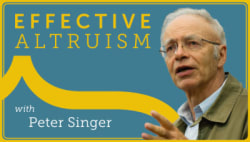Images
What makes WiFi faster at home than at a coffee shop? How does Google order its search results from the trillions of webpages on the Internet? Why does Verizon charge $15 for every GB of data we use? Is it really true that we are connected in six social steps or less? These are just a few of the many intriguing questions we can ask about the social and technical networks that form integral parts of our daily lives. This course is about exploring the answers, using a language that anyone can understand. We will focus on fundamental principles like “sharing is hard”, “crowds are wise”, and “network of networks” that have guided the design and sustainability of today’s networks, and summarize the theories behind everything from the social connections we make on platforms like Facebook to the technology upon which these websites run. Unlike other networking courses, the mathematics included here are no more complicated than adding and multiplying numbers. While mathematical details are necessary to fully specify the algorithms and systems we investigate, they are not required to understand the main ideas. We use illustrations, analogies, and anecdotes about networks as pedagogical tools in lieu of detailed equations.
Similar resources
Through teaching and research, we educate people who will contribute to society and develop knowledge that will make a difference in the world.


Paradoxes of War

Imagining Other Earths

Effective Altruism










